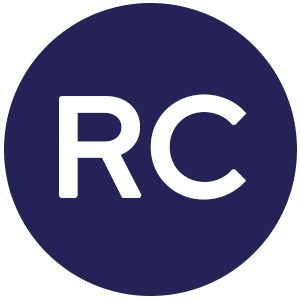The Joint Commission is a prominent U.S. organization that certifies hospitals for “providing safe and effective care of the highest quality and value.” Its hospital evaluation includes more than 250 standards that focus on areas related to patient safety—including conducting regular preventive maintenance of equipment.
Running afoul of the Joint Commission’s preventive maintenance standards can have serious consequences for a hospital, both in poor public relations and financial penalties. But tracking down all the equipment necessary to comply with Joint Commission standards can be an incredibly time-consuming and expensive effort for hospitals. In this post, we’ll outline those challenges and explain how a real-time location system (RTLS) can make this process much more efficient for hospitals while reducing the risk of violating Joint Commission standards.
Compliance is all about preventative maintenance
To be compliant with the Joint Commission’s standards for hospital equipment preventive maintenance, a certain percentage of each asset class must be assessed and/or repaired at least once per year. For non-life support equipment, such as infusion pumps or feeding pumps, a hospital must perform preventive maintenance on at least 95 percent of its inventory. For life-support equipment, such as ventilators, hospitals must reach 100 percent of their inventory.
Most hospitals perform preventive maintenance for different asset classes on a schedule throughout the year. At the start of such a cycle, it’s generally easy to manually find equipment, take it to the Biomed department to be maintained, then return it to service. The more equipment you process over time, the harder it is to find the items that still need attention.
This can be an even bigger challenge when a manufacturer announces a recall or emergency update for a particular kind of equipment, because the equipment may need to be taken off the floor for immediate attention. Hospital staff must walk the floors looking for proverbial needles in the haystack until the requisite number of each asset class has been taken off the floor, inspected and/or repaired, and its maintenance is recorded.
It’s also critical for a hospital’s inventory of each asset class to be accurate at the beginning of the preventive maintenance cycle. If a hospital has lost a percentage of items in an asset class—and studies have shown the average hospital loses up to 8 percent of its mobile equipment each year—that loss can reduce the number of items that must be maintained to comply with Joint Commission standards. Yet hospitals without tracking systems do not have visibility into equipment loss throughout the year and end up searching for equipment that has long left the building.
Here’s an example of how that can be a big problem during preventive maintenance:
Say your hospital has 20 ventilators to start the year. You must check all 20 of those ventilators to meet Joint Commission standards (ventilators are life-support equipment). Your staff, however, cannot find two of them. What they don’t know is that those ventilators have been lost in the past year—you have no record showing that loss and an incomplete maintenance count must now be documented.
Your hospital RTLS can help solve these frustrating challenges
With an RTLS, your asset managers know where each piece of equipment is in your hospital at any given time. In the event of a recall, when an immediate response is required, there’s no wasting time hunting for each item in an asset class across your hospital’s hundreds of thousands of square feet. During a preventive maintenance cycle, your asset management staff can find equipment as easily at the end of the designated cycle as they can at the beginning. Your hospital can meet its compliance thresholds for each asset class faster and more efficiently, allowing your staff to devote their time to more mission-critical tasks.
And while an RTLS cannot fully prevent equipment loss, it can record any losses that occur over a specific period. Returning to the ventilator example above, RTLS data would have reported that two of your hospital’s original 20 ventilators were no longer inside the building and therefore couldn’t be maintained. Your hospital’s asset management staff would know they only needed to find 18 ventilators, not 20, and avoid days or weeks of fruitless searching for the two permanently missing items. Your RTLS could also provide proof for the Joint Commission that, in maintaining 18 ventilators, your hospital had indeed performed maintenance on 100 percent of its inventory.
The takeaway for hospital leaders
Room-level accurate, enterprise-wide RTLS provides great benefits to hospitals in terms of risk mitigation and cost-avoidance. No hospital wants to be hit with a large fine or deal with the PR nightmare that comes with a public admonishment from the Joint Commission.
In addition, no hospital can afford to devote an inordinate amount of staff time to a hospital-wide scavenger hunt for missing or misplaced equipment. A solution like Cognosos’ RTLS is an invaluable tool to help your hospital avoid these complicated and potentially costly situations.
To learn more about how Cognosos helps your hospital maintain Joint Commission standards, read our related post: “3 Ways Hospital RLS Can Keep Medical Carts Stocked And Ready For Use.”



